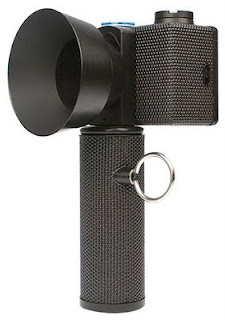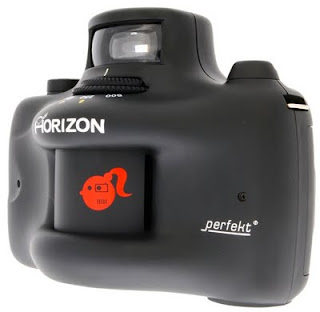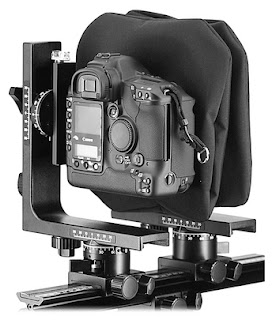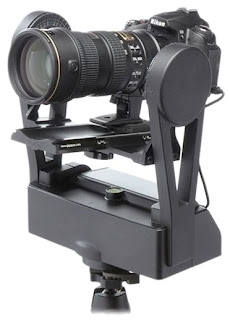The panoramic image is a popular pursuit in photography. So much so, that features to assist or create them are almost always incorporated in modern digital cameras.
The latest cameras have the ability to capture multiple frames while panning and “stitch” them together right in the camera. This is ideal for several reasons that I’ll discuss in a moment. Less recent cameras have had the ability to assist in composition by presenting a partial overlay of the previous frame for alignment, with external software used for the stitching. All of this is fun to play with, but there is more to producing a true panorama than meets the eye. Or the lens.
Lenses are subject to vignetting and barrel distortion, which alters the exposure and geometry of the edges of the photo in relationship to the center. And, since the left edge of one photo is the right edge of another, the geometric distortions occur in opposite directions. The vignetting is relatively easy to fix, but the geometric distortions are not. So, when working with multiple frame capture panoramas, some precautions are in order.
- Avoid using wide-angle lenses, or any lens with significant barrel distortion.
- Avoid using lenses with pronounced vignetting if possible.
- If using a zoom lens, avoid inadvertently changing the zoom angle.
- Use the camera in a vertical (portrait) orientation to minimize geometric distortions
- Use a pan-head tripod that has been leveled to the horizon.
- Use substantial overlap when composing the image frames.
The idea is to produce many thin image slices that are as free from distortion as possible. Using the camera vertically assures the maximum vertical resolution with minimal geometric distortion, since you will be in control of the horizontal resolution by how many frames you capture and compose. Here, digital cameras with the “Scanning” panoramic feature has the advantage. It can compose its image from many thin slices stitched together using intelligent software, not unlike the swing-lens film cameras below.
True Panoramas
The best way to produce a true panorama is through the use of a specialized panoramic film camera.
 |
| Horseman SW617 120-Format Panoramic Camera |
| | Some cameras use a panoramic frame format with a stationary, large coverage lens. The 120 format is ideal for this application, as the absence of sprocket holes maximizes the image area. This is difficult in the 35mm format, as most lenses do not possess the coverage necessary to expose the full width of the negative, even with vignetting.
These cameras produce extraordinary images, but at a price of several thousand dollars. |
Another type of panoramic camera is the “swing lens”. These cameras create one long continuous exposure by scanning the scene, which is done by rotating the camera and/or advancing the film, thus avoiding the coverage issue. These cameras produce good-quality, but no less compelling images at a cost of several hundred dollars.
Lomography’s Spinner 360 produces a frame approximately 172mm long on 35mm film that produces a 360° view. The image extends over the sprocket holes. | |
 |
| Lomography’s Spinner 360 35mm 360° Camera |
|
 |
| Horizon Perfekt 35mm 120° Panoramic Camera |
| | The Lomography Horizon Perfekt produces a 58mm wide negative with an approximate 120° of coverage. Nearly two full 35mm frames. The camera remains stationary while the lens scans the scene. |
True Digital Panoramic Solutions
To produce true panoramic images in the digital domain is more challenging. With a medium format DSLR such as the Pentax 645D, a single high resolution image can be captured with a wide angle lens and cropped accordingly. This would produce a frame 7,264 pixels wide. With a small format DSLR you could use a wide angle or fisheye lens to capture a single frame and crop accordingly, producing an image of between approximately 4,000 and 6,000 pixels wide depending upon the resolution.
 |
| Monhegan Island, Maine. A single capture “cropped” panorama. |
To overcome resolution limitations, there are two techniques that can be used to combine multiple frames; panning and shifting.
| A tilt-shift lens, also known as perspective control, can be used to capture two side-by-side images with little or no geometric distortion. You shift the lens to one side, capture the image, and shift the lens to the other side for the second, resulting in a modest gain in resolution. | |
 |
| A Tilt-Shift lens can avoid geometric distortion. |
|
 |
The Horseman LD View Camera gives a DSLR
the movements of a view camera. |
| | Another device, which turns a DSLR into a full-featured view camera, uses medium format lenses with wider coverage that can produce images with up to four times the resolution of a single capture. Because it does this through shifting and not panning, geometric distortion is a non-issue. You can use the additional horizontal width to produce stunning panoramas, or take advantage of both vertical and horizontal shift to increase resolution. |
To produce enormous resolution aka “gigabit” images, a robotic mount can be used to combine many, many image captures with intelligent stitching software. This system works best with longer lenses, which have very little geometric distortion and thus present less of a challenge to the software.
You can easily program the mount to produce panoramic images to your specifications. While these are not “true” panoramas, the minimal distortion afforded by the longer lens will be largely unnoticeable. | |
 |
| GigaPan Epic Pro Robotic Camera Mount |
|
The Triptych
Lastly, and not to be discounted is the simplest form of panoramic photography: the triptych. The triptych form originates from early Christian art in which altar paintings or carved panels were produced in three sections.
 |
| Head of the Harbor, Maine; Triptych of three separate images, approximately 14MP. |
These images of Boothbay Harbor, Maine were captured on Fujifilm Superia 400 facing south from the head of the harbor. They were not intended be part of a panoramic image, but assemble quite nicely into a triptych. With a little more planning, this could have been a stunning 36MP digital image.








No comments:
Post a Comment